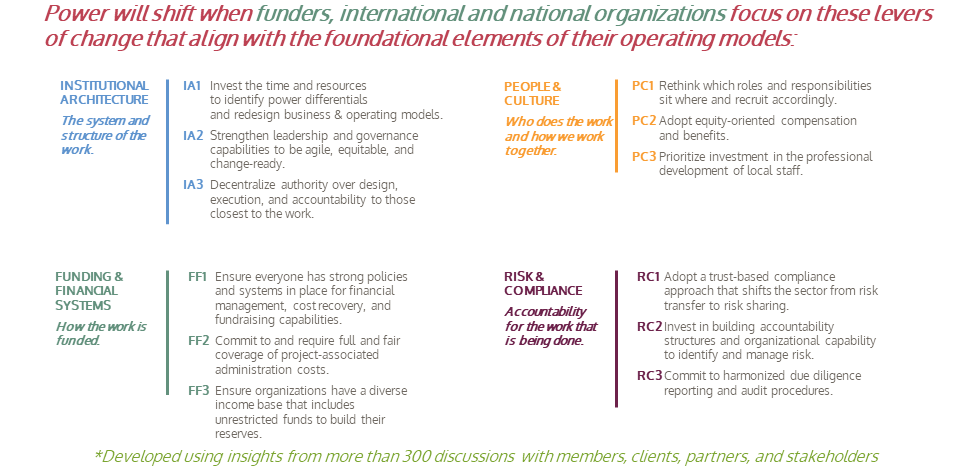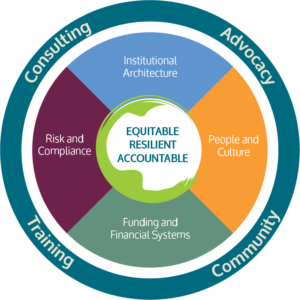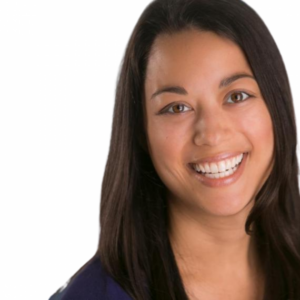Humentum’s Theory of Change Focuses on the Power of Internal Structure & Systems
Many of us who work in global development recognize that the sector largely operates in an environment of power imbalance and unequal relationships. To share just one data point, between 2016-2019, U.S.-based foundations directed only about 13% of their global grant dollars to local organizations in the countries where they had headquarters, according to data from the Council on Foundations and Candid.
This way of working is not only at odds with the values and principles of most development organizations, it is also less effective. The imbalance in the development sector leads to programs, products, and services of poorer quality and lower impact. We’ve all been in situations where it’s clear that those closest to the problem have the best knowledge of how to solve it. That’s true even for more data-based issues like climate change; you still need highly localized information to deliver the best solutions.
Despite decades of efforts to shift the balance, barriers continue to block progress. Humentum is part of a movement to remove those barriers by democratizing resources and decision-making to a more diverse set of entities, communities, and institutions. In short, get the tools closer to those who can best use them.
We believe the key to making change happen is focusing on the structures of how we work. While the “back office,” so to speak, generally gets less attention than program delivery, addressing the operating models of national NGOs (NNGOs) and international NGOs (INGOs) is a vital lever for creating more equity.
What is an operating model?
Before we talk about how to use operating models to remove barriers, let’s define them.
Some people might treat “operating model” and “operations” as synonymous. We use the term operating model to mean how the work is done to support strategy. That’s a big category, so we’ve divided the work into four foundation areas:
- Institutional architecture – the system and structure of the work
- People and culture – who does the work, where, and how we work together
- Funding and financial systems – how the work is funded
- Risk and compliance – accountability for the work
Humentum believes real change will happen when organizations are able to exercise autonomy over their operating models. To support this shift, Humentum has:
- Created a set of principles to guide our collective work;
- Identified levers of change to remove systemic barriers.
By working within those principles and addressing those levers, we can build and sustain equitable, resilient, and accountable operating models.
A Theory of Change: Start with Structure
Humentum’s theory of change grew out of conversations with more than 300 members, clients, partners, and stakeholders. The theory guides our work and explains our position: we believe organizations need to strengthen their operating model for sustainable change.
Multiple stakeholders need to be involved: NNGOs, INGOs, and funding partners. Because these stakeholders are dependent on each other, all three will have to rethink their approaches, tools, leadership, funding flows, and funding requirements.
The Levers of Change
So where do you start? Humentum has identified ‘big bets’ within each foundation area; practical changes that we believe need to happen for power to shift in a real way. Addressing these critical areas will act as levers of change, reducing barriers to equitable and locally-led development and increasing autonomy. That increased equity and autonomy, in turn, opens up space for transformation.

Focusing on What to Fix
Moving from theory to practice, how does this translate? Right now, many international organizations are actively working to decentralize authority — moving decision-making authority AND accountability to people closer to the decisions and the risks (see above IA3).
This means, for example, a serious reconsideration of headquarters. Does it relate to location, or does it relate to a role? (see above PC1).
A practical power shift might also look like NNGOs, INGOs, and funders committing to request, require, and/or flow down full and fair coverage of costs, focusing on the Financing & Funding area (see FF1 above).
Why is full and fair cost coverage important? Learn more about the ‘starvation cycle’.
Moving from What to How and Who
How we go about the change is as important as what must change. With so many actors working to make change happen, it seemed wise to lay out a set of principles to guide us.
Humentum’s Theory of Change states that everyone involved must recognize and remember that:
- There is no one-size-fits-all approach to power shift. Not every organization will have the same vision, understanding, or goal related to shifting power or locally-led development.
- Shifting power should not be dichotomized, but instead viewed as an opportunity to share rather than win or lose power.
- We need to understand the dynamics of power to redirect it. We must evaluate and change where, how, and who manages control and decision-making.
- Meaningful progress will require buy-in and action at all levels. Doing this will be harder than we think. We shouldn’t minimize the significance of change in the lives of everyone involved.
- This will take dedicated resources. This will require a commitment of time, people, and money.
- Transformative partnerships will be those of consequence, not of convenience. They will go beyond the traditional 3-5 year project cycle.
- Trust will be central. To increase trust, we must break down myths and dismantle stereotypes about capacity as well as allow the space to consider uncomfortable but real fears like taking risks, speaking out, or losing livelihoods, amongst others.
Everyone has a role
The operational barriers in global development are too big and complex for any one entity to solve.  Everyone – individual practitioners, INGOs, NNGOs, funders, and networks – must play their part.
Everyone – individual practitioners, INGOs, NNGOs, funders, and networks – must play their part.
Right now, many organizations believe in the need for change but are struggling to move from talk to action. Humentum will continue to use the power of our sector-wide network to identify trends and highlight good work to provide a vision of what is possible.
We will also continue to use our expertise in training, consulting, community, and advocacy to work with funders, international, and local implementing partners to build and support operating models that create equity, resilience, and accountability (ERA).
We call this the Humentum Way: a coordinated approach to build and improve operating models to make lasting, positive change.
If you’d like to learn more, please visit our website or reach out to Kim Kucinskas for a conversation.

